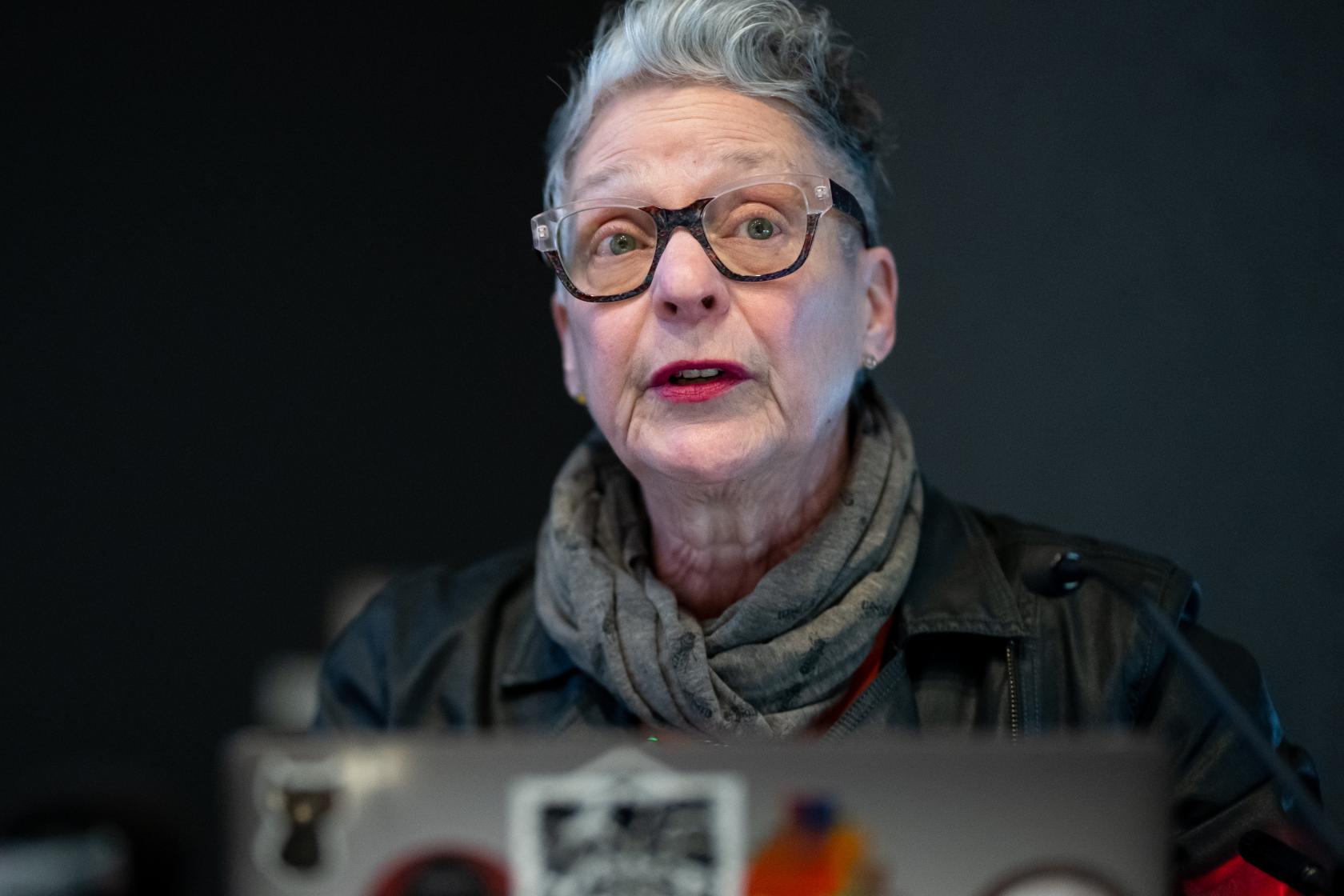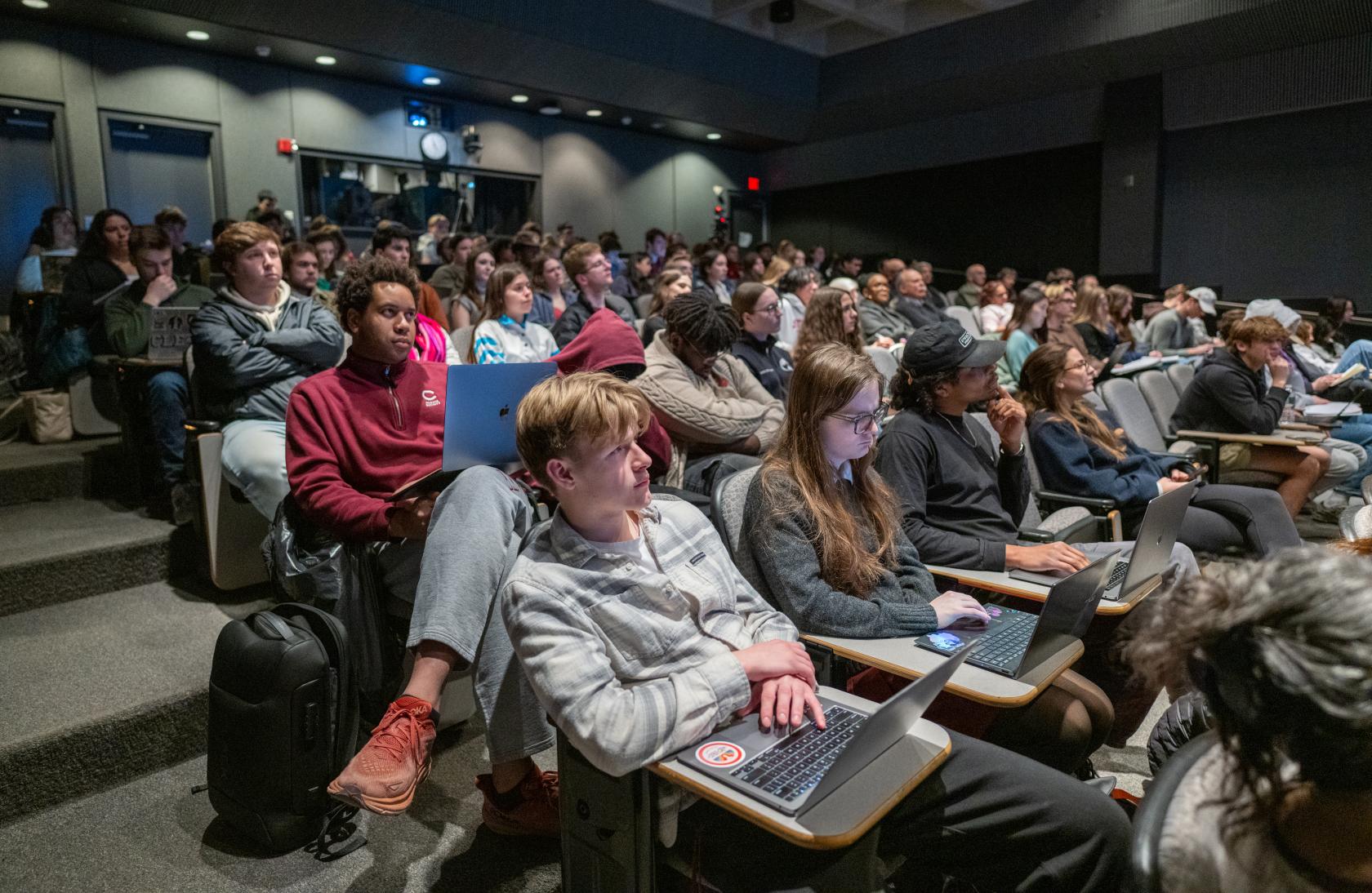Colgate University welcomed prolific bio-artist and experimental filmmaker Kathy High ʼ77 as part of the Eric J. Ryan and Film and Media Studies (FMST) Annual New Media Lecture Series, March 11–13. The series is part of the Middle Campus Initiative for Arts, Creativity, and Innovation, which integrates the arts into life and learning at Colgate.
The filmmaker screened excerpts from her films for Alternative Cinema, presented the lecture “Being with Beings: Queering Art and Science,” and curated Mexican Muses: Works by Artists Ximena Cueva and Ricardo Nicolayevsky for the Ryan Family Film Series. In addition to the on-campus events, FMST students benefited from High’s critiques of their films.
High is a professor of video and new media in the arts at Rensselaer Polytechnic Institute (RPI) in Troy, N.Y. Through her art, she collaborates with scientists on issues surrounding living systems, animal sentience, and biotechnology and medical ethical dilemmas.
She is the co-founder of the Sanctuary for Independent Media, a community organization focused on the use of art and science to promote social and environmental justice and freedom of expression. She is also the coordinator of NATURE Lab, the Sanctuary’s community health and urban ecology research initiative.
High’s focus on the intersection of art and science was born at Colgate, thanks to the foundation of a liberal arts education and her own health journey with Crohn’s disease. Originally on track to be in the class of 1976, High became so ill that she did not graduate until the following year. She describes her diagnosis as a blessing in disguise — serving as the inspiration for her films that explore the medical community’s treatment of women and chronic diseases, as well as laying the groundwork to venture into bio-art.

